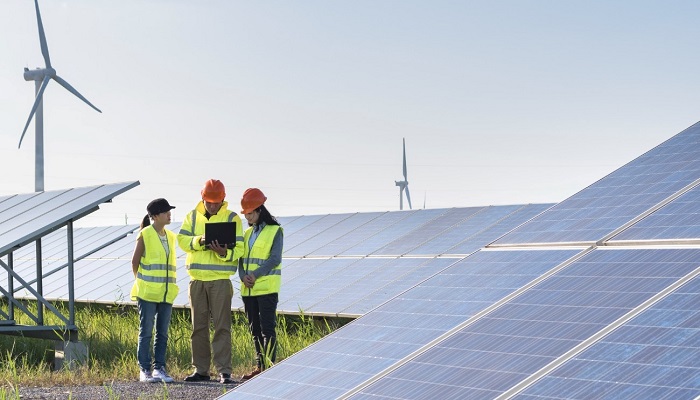By 2022-end, global renewable generation capacity reached 3372 gigawatts (GW), thereby increasing the stock of renewable energy by a record 295 GW, or 9.6%. An astounding 83% of all new power capacity that was installed last year was due to renewable energy production.
According to the International Renewable Energy Agency’s (IRENA) Renewable Capacity Statistics 2023, renewable energy continues to develop at historic levels despite global uncertainty, confirming the declining trend of fossil-fuelled power generation.
Its continuous record rise demonstrates the endurance of renewable energy in the face of the ongoing energy crisis, according to IRENA Director-General Francesco La Camera. Renewables’ strong commercial case, along with supporting regulations, has kept its share of the global energy mix rising year after year. But, annually, renewable power capacity increases must be threefold by 2030 if one wants to stay on track to limit global warming to 1.5°C.
While several countries boosting their renewable capacity in 2022, the considerable expansion of renewables is likely to focus on a few countries and regions, such as Asia, the United States, and Europe. According to IRENA data, nearly half of all new capacity installed in 2022 was in Asia, culminating in a total of 1.63 terawatts (TW) of renewable power by 2022’s end. China contributed the most, adding 141 GW to the continent’s new capacity.
Renewables increased by 57.3 GW in Europe and 29.1 GW in North America. Africa kept growing gradually, with a 2.7 GW increase, slightly more than last year. Oceania maintained its double-digit expansion with 5.2 GW, while South America maintained its upward trend with a 18.2 GW capacity expansion. The Middle East saw its greatest rise in renewable capacity on record, with 3.2 GW of additional infrastructure commissioned in 2022, representing a 12.8% increase.
La Camera added that since energy consumption is likely to rise in many parts of the world, the energy transition will necessitate a step change that goes beyond supply-side decarbonization. Any growth of new non-renewable potential in light of recent global events must be linked to initiatives to speed the energy transition so as to make the system more robust, inclusive, and climate-proof.
Despite hydropower accounting for the majority of global total renewable energy capacity (1250 GW), solar and wind remained the dominant new generating sources. Together, the two technologies supplied 90% of all renewable energy capacity in 2022. Solar capacity climbed by 22%, followed by wind energy, which boosted its generating capacity by 9%.
Highlights in technology:
Hydropower: Renewable hydropower capabilities surged by 21 GW (+2%), continuing the trend of recent years.
Wind energy: With an increase of 75 GW (+9%) across 2022, wind power growth has consistently slowed as compared to the previous two years.
Solar energy: Solar photovoltaic (PV) power accounted for nearly all of the growth in solar power in 2022, with a surge of 191 GW in solar PV.
Bioenergy: Expansion has slowed marginally in 2022, with +7.6 GW as opposed to +8.1 GW in 2021.







































